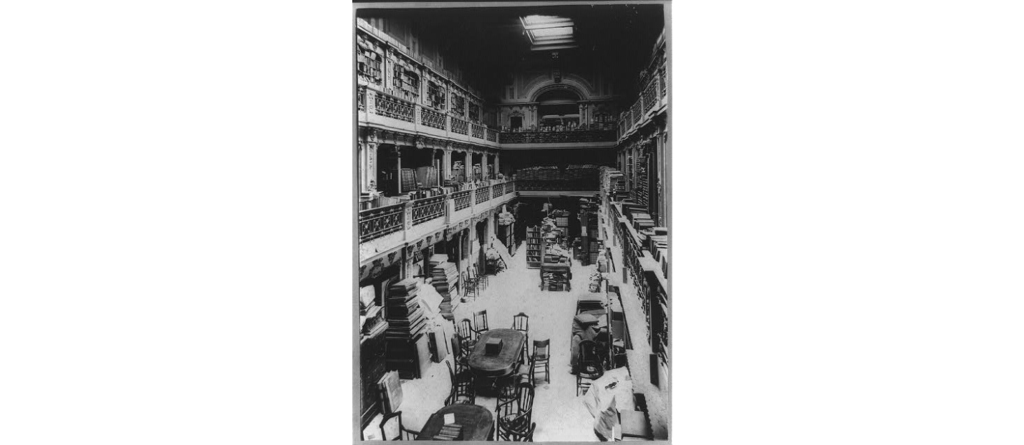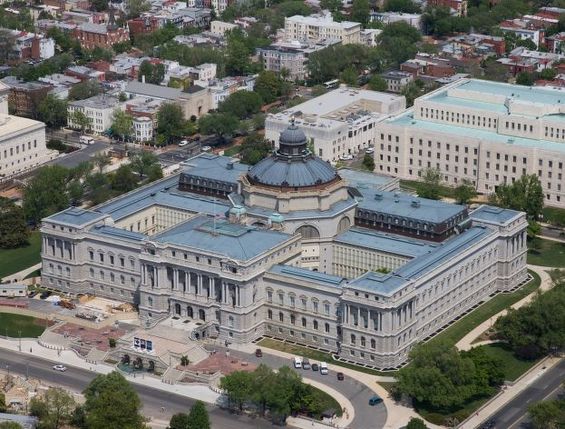How Publishing A Book Makes You Part of History – All About the Library of Congress

Library of Congress main floor – Wikipedia
When you publish a book with Dorrance, we send a copy of your book to the Library of Congress. This is because the Library of Congress oversees the United States Copyright Office. After your book is printed, Dorrance will complete the online registration, listing you, the author, as the claimant for the copyright. The online application is then followed by mailing a physical copy of the book to the Copyright Office. In effect, your book, along with hundreds of thousands of books, is then held by one of the most famous libraries in the world!
The Library of Congress is the official research library of the United States Congress, and the de facto library of the United States. In 2021, Guinness World Records determined it was the world’s largest library by items in its collection, surpassing the British Library in London.
The history of the Library of Congress began in 1800 when Congress officially moved to Washington, D.C. In the Act of Congress for the movement of the capitol signed by President John Adams was a stipulation for the purchase of books that might be necessary for the function of Congress, as well as a place to put them.
Much of the original collection of the Library was burned in the War of 1812. In order to restock the library, Thomas Jefferson sold his personal library to Congress. Some opposed certain books in the library, given that they were not of topics of legislative interest. Most supported keeping the items, and around this time the Library of Congress System of classification was developed, which libraries across the country adopted and still use today.
Unfortunately, a large fire destroyed 35,000 books in 1851. Around the time of the civil war, the library’s importance was weakened, with many arguing it should have a limited scope for legislative needs only. However, there were still those who argued for its importance as a broad based research institution. It wasn’t until the end of the Civil War that the library was expanded, and library director Ainsworth Rand Spofford garnered support to grow the library into a national library as well as a legislative resource.

The library in 1897. LoC.gov
The remainder of the 19th century saw the Library of Congress expand and grow into a national library with the largest collection of any library in the United States. More staff and a bigger budget all contributed to its growth. In 1902, the LoC moved into its own building. The library acquired many works from around the world such as works from the Russian Imperial Romanov family collection and a copy of the Gutenberg Bible.
During the time of World War II and the Progressive era, Librarian of Congress Archibald MacLeish became a well known spokesperson for the LoC and libraries of America, seeing them as important institutions for fostering democracy and countering authoritarianism.
In the 20th century, the Library required more buildings to house its collections. The John Adams Building opened in 1939, and the James Madison Memorial Building began construction 20 years later. The LoC grew more into a role as a federal institution rather than a mere legislative library, with some arguing its name should be changed to reflect this. The Library of Congress name remained, due to its historical significance.

LoC.gov
However, there was also pushback against the LoC moving away from research from Congress. The Legislative Reorganization Act of 1970 placed emphasis on the library’s legislative roles. The other functions of the library would still continue to grow into the 21st century. In 1974, President Gerald Ford appointed Daniel J. Boorstin as the LoC librarian. A historian by trade, Boorstin grew the LoC collections and connections with other institutions in the scholarly world, publishing, and business.
In the 21st century, the LoC has undergone efforts to digitize its collections and expanded its role as an archive of American history, world literatures, and artifacts. As an institution, the LoC hosts and sponsors events and is seen as a leader in the library science field.
As it is a research library, items are not allowed off the premises of the library, except in exemptions given to high-ranking officials and LoC staff members. People are allowed to read books on the library grounds. Tours of the library are given on a regular basis.
The Library of Congress is an American institution with a rich history, by the people and for the people.
And by publishing a book, you become part of that history!
(Sources consulted: Wikipedia, Encyclopedia Britannica)
